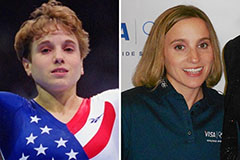Just How to Carry Out Usual Sprinkler Repair Service to Keep Your Watering System
Concerns such as reduced water pressure, clogged nozzles, and damaged heads can substantially affect the system's performance. Cleaning up or unclogging nozzles and replacing malfunctioning heads are foundational tasks that can enhance water circulation. Readjusting water pressure to the optimum array of 30-50 psi ensures uniform insurance coverage.
Identifying Common Sprinkler Issues
A well-kept sprinkler system is important for effective grass care, however also the finest systems can run into issues. One frequent trouble is reduced water stress, which can cause unequal watering and dry patches on your lawn.
One more prevalent problem is lawn sprinkler heads that do not turn up or retract appropriately. This breakdown can be due to particles obstructing the device or a damaged springtime. Furthermore, misaligned sprinkler heads can cause water being sprayed onto sidewalks, driveways, or other unexpected locations, resulting in water wastage and not enough protection of your lawn.
Cleaning and Unclogging Nozzles
When managing typical sprinkler concerns, addressing clogs is crucial for keeping optimal system efficiency. In time, debris such as dirt, yard trimmings, and mineral deposits can collect within the nozzles, obstructing water circulation and minimizing irrigation efficiency. To guarantee your lawn sprinklers operate effectively, regular cleansing and unclogging of nozzles is crucial.
Begin by shutting off the watering system to prevent any unintended water discharge. Carefully remove the nozzle from the sprinkler head. This may need the usage of a little screwdriver or a specialized nozzle elimination tool. Once detached, evaluate the nozzle for noticeable debris. Utilize a fine needle or a small cord to dislodge any kind of blockages within the nozzle's opening. For comprehensive cleaning, saturate the nozzle in a blend of water and vinegar or a business cleaning remedy developed to liquify natural resource.
Wash the nozzle under running water to eliminate any staying debris and reattach it to the sprinkler head. Turn the system back on and observe the water circulation to ensure the clog has actually been cleared. Routine maintenance of sprinkler nozzles can considerably enhance the longevity and performance of your irrigation system.
Changing Broken Sprinkler Heads
Replacing broken sprinkler heads is an important action in preserving an efficient irrigation system. When a lawn sprinkler head ends up being broken, it can lead to water wastage and uneven coverage, which can detrimentally impact the health of your grass or garden. The primary step is to recognize the defective head, typically obvious via uneven water spray patterns or water merging around the base.
Begin by shutting off the water system to protect against any type of unneeded spillage. Utilize a shovel to very carefully dig around the sprinkler head, guaranteeing you do not damage the bordering piping. As soon as subjected, unscrew the damaged head from the riser, taking note of the make and version to ensure you acquire a suitable substitute.
Screw the brand-new sprinkler head onto the riser by hand, guaranteeing it is snug yet not extremely tight to stay clear of damaging the threads. Transform the water supply back on and check the brand-new head to guarantee it is operating properly, making changes as needed.
Changing Water Stress and Insurance Coverage
In order to optimize the efficiency of your watering system, readjusting water stress and protection is necessary. Appropriate water stress guarantees that each sprinkler head operates effectively, distributing water equally throughout your lawn or garden.
Following, concentrate on readjusting lawn sprinkler head insurance coverage to get rid of dry places and overwatered areas. Begin by transforming on the system and observing the spray patterns. For rotating heads, adjust the arc and span setups making use of a screwdriver to modify the direction and Home Page range of water flow. For spray heads, utilize the modification screw on the top to tweak the spray pattern.
Ensure overlapping coverage between adjacent sprinkler heads to prevent missed out on locations. Likewise, look for any kind of obstructions such as plants or frameworks that might obstruct water circulation. By calibrating water pressure and fine-tuning lawn sprinkler head coverage, you can maintain a lavish, healthy and balanced landscape while preserving water sources effectively.
Routine Upkeep Advice
Next, inspect for leaks in the watering lines. Tiny leaks can rise right into substantial problems if left unaddressed. Screen the water stress during operation; fluctuations can show concealed leaks or obstructions. Replace damaged or damaged parts without delay to prevent additional difficulties.
Readjust the system's timer setups according to seasonal water requirements. Overwatering or underwatering can damage your landscape and waste sources. In addition, check the rain sensing unit and guarantee it is working correctly to avoid unneeded watering during rainfall.
Verdict
Normal examination and punctual fixing of lawn sprinkler are necessary for ideal irrigation efficiency. Attending to usual problems such as low tide stress, stopped up nozzles, and broken heads can significantly boost system effectiveness. Cleaning nozzles with a fine needle and vinegar, changing malfunctioning heads, and adjusting water stress to 30-50 psi are important steps. Seasonal upkeep checks, including leakage detection and timer changes, additionally optimize water use and ensure the long life of the read more irrigation system.
 Josh Saviano Then & Now!
Josh Saviano Then & Now! Kirk Cameron Then & Now!
Kirk Cameron Then & Now! Marques Houston Then & Now!
Marques Houston Then & Now! Barry Watson Then & Now!
Barry Watson Then & Now! Kerri Strug Then & Now!
Kerri Strug Then & Now!